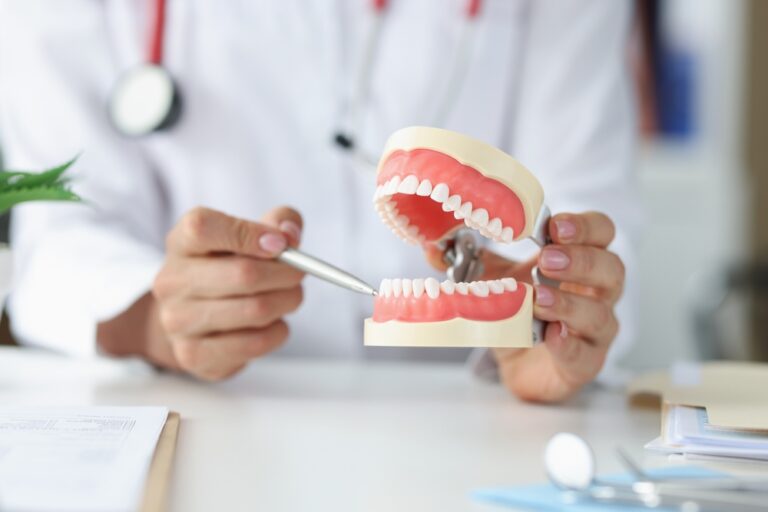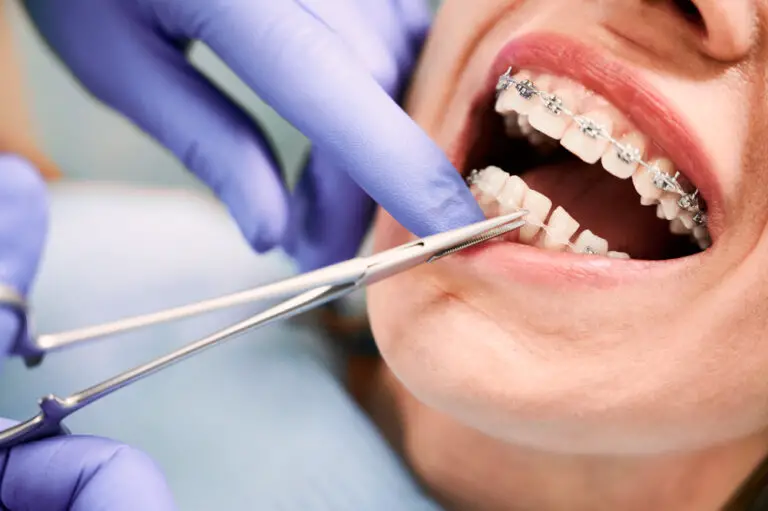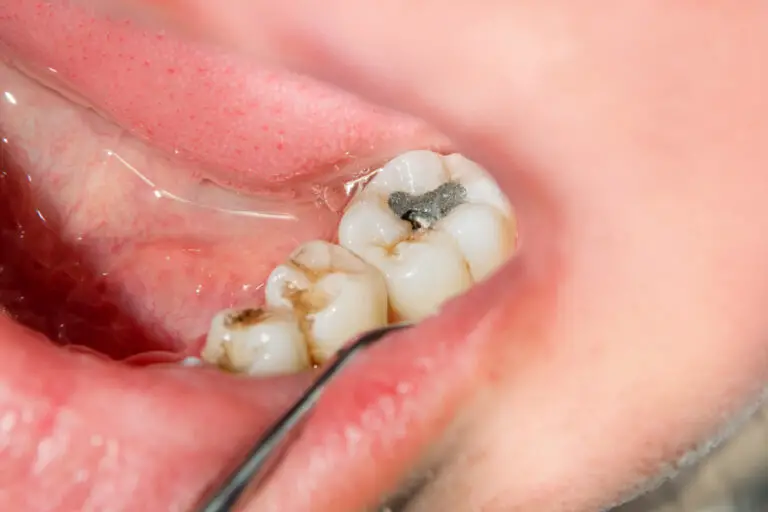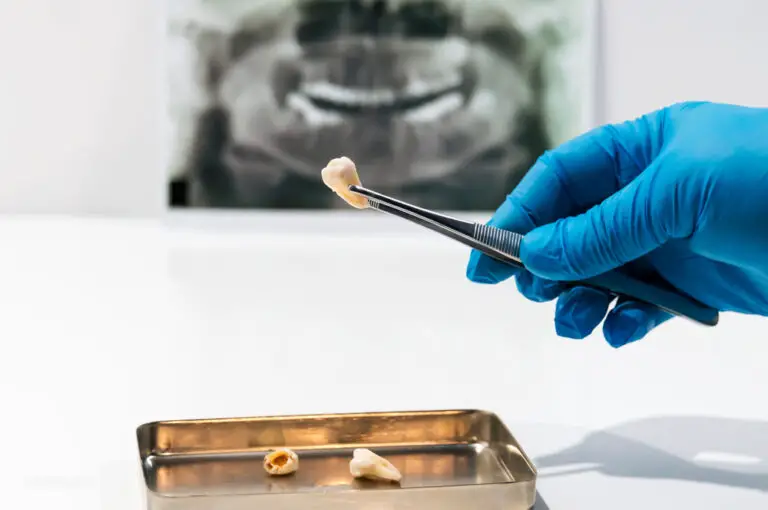Coffee is beloved around the world for its rich flavor and energizing caffeine boost. However, many habitual coffee drinkers notice their pearly whites take on a yellowish tinge over time. While a little staining may not be noticeable, heavier discoloration can make teeth look dingy and unhealthy.
There are several reasons why coffee causes tooth staining, some inherent to the beverage itself and others related to how it is consumed. Understanding the science behind coffee and teeth can help you enjoy your daily cup of joe without sacrificing your bright smile.
Coffee’s Natural Compounds Bind to Tooth Enamel

The main compounds in coffee responsible for tooth staining are called chromogens. Chromogens are colorless substances that attach to the crystalline enamel that covers the outer layer of teeth. They are able to penetrate the microscopic pits and crevices in enamel.
Over time, the accumulation of chromogens in enamel leads to stubborn discoloration that can range from light yellow to dark brown. There are two primary chromogens found naturally in coffee beans:
Tannins
Tannins are water-soluble polyphenols present in many plants, including the coffee plant. They are found in higher concentrations in the beans and leaves of the coffee plant.
Tannins give coffee its characteristic bitter taste. They also allow the beverage to produce a brown stain if spilled on fabric or carpet. This ability to bind to surfaces allows tannins to tenaciously adhere to tooth enamel as well.
Tannins bind especially well to the hydroxyapatite crystals that make up enamel. They latch onto the available calcium ions. This allows them to penetrate deeper into enamel over repeated exposure.
Polyphenols
Coffee beans also contain polyphenol compounds like chlorogenic acid. Polyphenols are micronutrients packed with antioxidant properties.
However, despite being beneficial for health, polyphenols also readily bind to tooth enamel. Chlorogenic acid in particular appears brown when oxidized. This allows it to cause discoloration in teeth with repeated contact.
Both tannins and polyphenols are able to cause persistent staining because they adhere well to the irregular surface of enamel. The longer they remain on teeth before brushing or rinsing, the more time they have to latch onto available binding sites in enamel.
Darker Roasted Coffee Leads to More Staining
Coffee beans naturally contain the most tannins and polyphenols when they are still green and unroasted. As the beans are roasted, the levels of these chromogens decrease.
However, longer roasting produces other chemical changes in beans that can still cause major tooth staining:
More breakdown of chlorogenic acid
When coffee beans are roasted, the high heat breaks down the chlorogenic acid in the beans. This chemical reaction produces quinides, which are derivatives of chlorogenic acid.
Quinides are brownish pigments that give roasted coffee beans their characteristic color. As roasting time increases, more chlorogenic acid gets converted to quinides.
Therefore, darker roasted coffee beans contain higher levels of quinides. This means darker roasts like French roast and espresso can lead to more significant tooth staining compared to lighter roasts.
Increased hydrolysis
The longer coffee beans are roasted, the more the cellulose in the beans undergoes hydrolysis or breaking down due to the moisture involved.
This hydrolysis also frees up more staining compounds that can leach out during the brewing process and come into contact with teeth enamel.
Changes in pH
Roasting makes coffee beans more acidic, with darker roasts being the most acidic. The lower pH of dark roasts allows more binding sites for chromogens to adhere to enamel.
Types of roasts and staining
The level of roasting affects staining potential in these ways:
- Light roasts like Cinnamon Roast retain more natural tannins and polyphenols that can penetrate enamel.
- Medium roasts like Breakfast Roast have moderate staining potential from a blend of remaining polyphenols and new quinides.
- Dark roasts like French Roast or Italian Roast have the most quinides and hydrolyzed compounds that cause more stubborn staining.
Very dark oily beans used for espresso are especially staining due to an extended roasting time. Espresso’s fine grinding also increases staining by exposing more enamel surface area to pigmented oils during brewing.
Acidity in Coffee Erodes Tooth Enamel
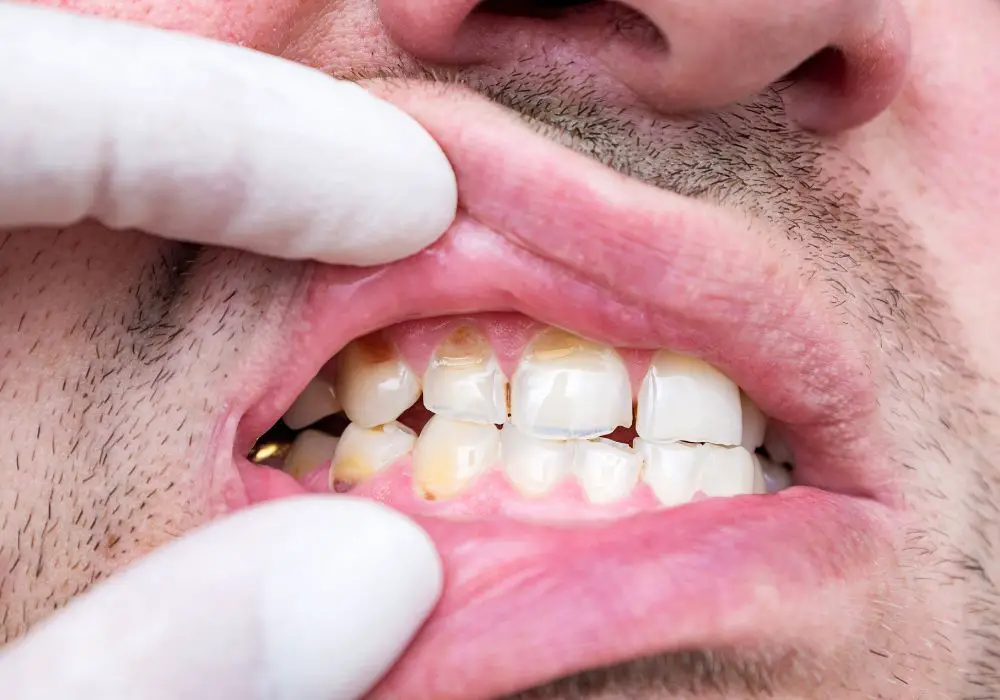
Coffee is mildly acidic, with a pH between 4 and 5. Anything below a neutral pH of 7 is considered acidic.
This acidity comes from compounds like chlorogenic acid, quinic acid, and tannic acid present in coffee beans and released during the brewing process.
When acidic foods or beverages make contact with teeth frequently, the enamel can erode over time. Enamel is made up of hydroxyapatite crystals containing calcium and phosphate.
Acids dissolve the calcium out of enamel in a process called demineralization. This makes the enamel softer and more porous. The enamel surface becomes eroded, causing microscopic pits.
Thinner eroded enamel is weaker and allows chromogens like tannins and polyphenols to penetrate into deeper layers of the teeth. Enamel erosion also reveals the naturally yellower dentin underneath.
Without the smooth, white enamel protecting the tooth’s surface, staining compounds in coffee easily cause deeper and more stubborn discoloration of teeth.
Adding Sugar or Dairy Worsens Staining
Many coffee drinkers add ingredients like sugar, milk, or creamer that can worsen staining of teeth:
Sugars Help Stains Adhere
Added sugars make coffee more cariogenic or cavity-causing. Sugars are fermented by the bacteria in dental plaque, producing acids that demineralize enamel.
Sugars like sucrose and glucose are also sticky, which allows them to help chromogens adhere better to enamel. The increased length of time stains stay on the teeth gives them more opportunity to penetrate into the microscopic pits and defects in enamel.
Over time, this leads to pronounced yellowing or browning, especially on smooth surface areas of teeth.
Milk Proteins Also Stick to Teeth
Adding dairy products like milk, cream, or creamer makes coffee more staining as well. The milk proteins casein and whey concentrate in the coffee’s surface tension.
This allows them to bind to enamel, providing another substance for staining compounds to latch onto. Added dairy also increases the viscosity and stickiness of coffee.
Thicker, stickier coffee spends more time coating the teeth before being washed away by saliva. This provides a longer chance for chromogens to penetrate and bind to enamel.
Sugary Coffee Drinks Worsen Staining
Popular coffee-based drinks like caramel macchiatos and white chocolate mochas contain extra sugar beyond what is added to regular coffee.
The higher amounts of added sucrose, glucose, and dairy thicken and sweeten these coffee drinks. This combination provides the perfect storm for tea and polyphenol staining compounds to tenaciously adhere to tooth surfaces.
Often consumers slowly sip on these high-sugar drinks. The constant bathing of teeth in staining and sticky substances allows deep penetration into enamel pores and defects.
Over time, significant cumulative staining can build up and be nearly impossible to remove through casual brushing alone. Professional whitening may be required to remove the deep-set discoloration.
Habits Affect How Much Coffee Stains Teeth

Certain habits can worsen tooth staining from coffee consumption:
Frequency of Coffee Intake
Drinking more than 2-3 cups of coffee per day provides more frequent exposure of teeth to staining compounds. The constant contact with tannins and polyphenols allows deeper penetration into enamel over time.
Moderate coffee intake limits staining by reducing repeated contact between chromogens and enamel. Swishing with water or brushing after higher intake can help remove staining compounds.
Holding Coffee in Mouth
Some coffee aficionados like to hold or swish coffee in their mouth to savor the different flavor notes. However, this exposes teeth to staining compounds for longer periods.
The longer chromogens coat the teeth before being washed away by saliva or swallowing, the more they are able to penetrate enamel.
Drinking coffee steadily without holding it minimizes staining by reducing contact time with teeth.
Drinking Through a Straw
Positioning a straw farther back in the mouth and sipping prevents some but not all tooth staining. A straw reduces contact between coffee and the visible front teeth.
However, the back molars still receive exposure to staining compounds. Discoloration of back teeth is just less noticeable.
Swishing or Rinsing After Drinking
Swishing water or rinsing the mouth removes some staining compounds coating the teeth after consuming coffee. This physical action helps wash away chromogens before they extensively penetrate enamel.
Brushing After Coffee
Brushing teeth soon after drinking coffee can minimize staining by removing clinging tannins and polyphenols left behind after finishing the beverage.
Effective brushing that reaches all tooth surfaces is key. Avoid brushing too vigorously, which can damage enamel and worsen staining over time.
Poor Oral Hygiene
Infrequent brushing and flossing allows more buildup of chromogens on teeth. Irregular professional cleanings also let stains accumulate.
Proper oral hygiene minimizes staining by regularly removing clinging compounds before they can penetrate enamel.
Intrinsic Factors Affect Stain Susceptibility
Some individuals seem more prone to teeth staining from coffee and other foods and drinks. This may be due to:
Thin or Weakened Enamel
Enamel varies naturally in thickness and smoothness among people. Thinner enamel has less protective coverage over the yellowish dentin underneath.
Weak spots or defects in enamel also allow deeper penetration of stains. Enamel can become thinner due to acid erosion or conditions like fluorosis.
Dry Mouth
Reduced saliva flow leads to a dry mouth. Saliva helps wash away food residues like staining compounds. It also contains minerals that help remineralize enamel.
With less saliva, chromogens cling longer to tooth surfaces and more readily penetrate into pores. Staining severity corresponds to dry mouth severity.
Misaligned Teeth
Crooked or crowded teeth have uneven surfaces that can more readily trap chromogens like tannins. The staining compounds penetrate into exposed enamel defects and cracks.
Well-aligned teeth have smoother surfaces that resist staining. However, tooth alignment does not affect the eventual need for removal of stains through brushing or professional cleaning.
Dental Work
Composite fillings, ceramic crowns, and porcelain veneers are more prone to staining than natural enamel. The materials are less resistant and more porous.
However, good oral hygiene and professional cleanings can effectively remove external discoloration of dental work. Avoiding heavily pigmented foods helps prevent some stain absorption.
Orthodontics Like Braces
Braces and other fixed orthodontics make adequate brushing and flossing more challenging. Food debris and chromogens get trapped around brackets and wires more readily.
Stains tend to concentrate in band areas around braces but can be removed with professional cleaning after orthodontic treatment. Maintaining oral hygiene as best as possible minimizes staining.
Genetic Predisposition
Some people are just more prone to teeth staining and yellowing due to thinner enamel or more transparent dentin. This allows the yellowish color underneath to show through more.
However, the color change is usually uniform across teeth rather than in isolated spots. Maintaining good oral hygiene and getting regular cleanings can still minimize discoloration.
Preventing and Removing Coffee Stains on Teeth
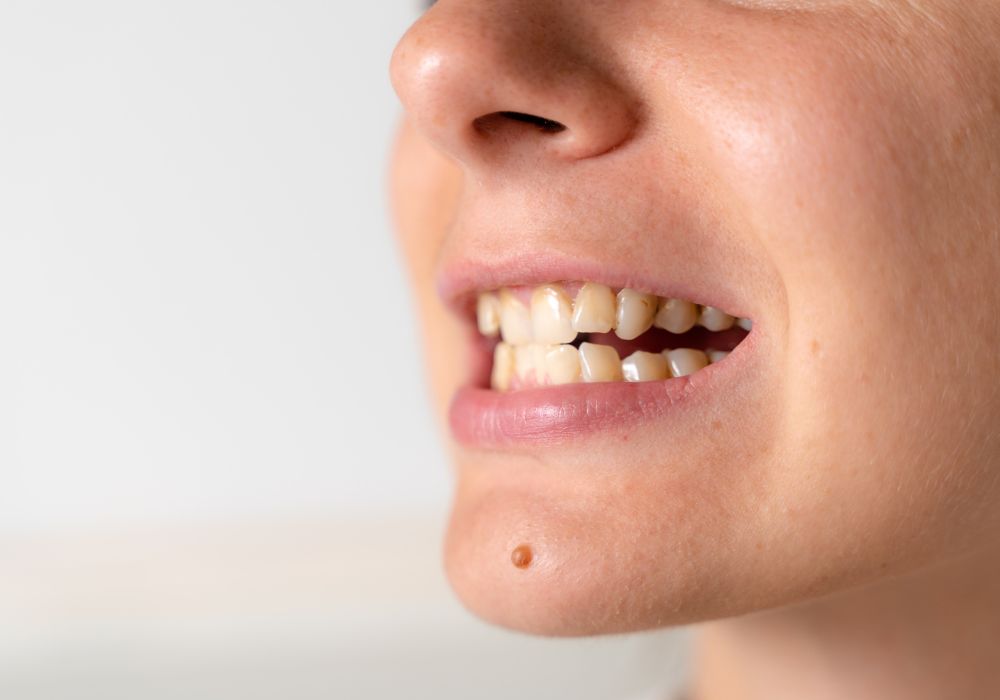
It may be impossible to prevent all tooth staining from coffee, especially with frequent consumption. However, using certain tactics can help minimize discoloration:
Drink Coffee in Moderation
Limit coffee intake to 1-2 cups daily to reduce frequent exposure of teeth to staining compounds. Drinking through a straw and rinsing with water after can further minimize contact.
Rinse Mouth After Consuming Coffee
Swishing water in the mouth washes away staining compounds coating the teeth before they extensively penetrate enamel.
Brush Soon After Drinking Coffee
Gently brushing teeth within 20-30 minutes of consuming chromogen-containing foods or drinks removes clinging residues before they permanently bind to enamel.
Use a Whitening Toothpaste
Look for toothpastes containing silica, baking soda, calcium carbonate, or hydrogen peroxide. These help safely scrub away external stains on enamel.
Get Regular Professional Cleanings
Dental cleanings every 6 months allow complete removal of tenacious extrinsic stains from coffee, tea, and other chromogens.
If teeth are still yellowed from intrinsic staining or enamel erosion, in-office or take-home whitening treatments can brighten teeth beyond what’s achievable from brushing alone.
Consider Bonding or Veneers
For severe brown staining concentrated on a few teeth, cosmetic bonding or porcelain veneers can mask discoloration. Crowns are required if enamel damage is too extensive.
Removing existing coffee stains also requires diligence:
Use Whitening Toothpastes
Gently abrasive toothpastes help physically scrub away superficial yellowing from chromogens through routine brushing. Look for ingredients like silica, baking soda, or calcium carbonate.
Avoid highly abrasive formulas, which can damage enamel over time. Always use a soft bristle toothbrush and gentle brushing motion.
Try Over-the-Counter Whitening Strips
Whitening strips coated with peroxide bleach help lighten both extrinsic and intrinsic dental stains. Start with short wear times to minimize initial tooth sensitivity from the peroxide.
Results are gradual compared to professional treatments but cost a fraction of the price. Strictly follow application instructions for safety and effectiveness.
Get Professional Whitening Treatments
In-office laser whitening rapidly bleaches teeth several shades lighter in one visit but costs hundreds per session. Custom take-home trays prescribed by a dentist use high peroxide gels for dramatic whitening over 1-2 weeks of use.
These professional methods achieve the maximum whitening power compared to OTC strips through stronger concentrations of bleaching agents. They can remove the most stubborn brown coffee stains.
Have Regular Dental Cleanings
Professional cleanings every 6 months allow dentists and hygienists to thoroughly remove all external chromogen stains from coffee, tea, wine, etc. This can immediately brighten teeth a couple of shades.
Cleanings also remove bacteria, plaque, and tartar that could otherwise exacerbate staining over time. Regular cleanings prevent future stains from accumulating again after whitening.
Reduce Future Staining
Prevent stains from returning by drinking coffee in moderation, using a straw, rinsing mouth, brushing after drinking, and avoiding sugary coffee beverages. Get cleanings every 6 months and touch up with occasional OTC or professional whitening.
In summary, coffee can yellow teeth due to the staining action of tannins, polyphenols, and pigmented compounds that form during roasting. The acidity also erodes protective enamel over time. Frequent consumption, habits like holding coffee in mouth, genetics, and dental work can increase susceptibility to discoloration. Stick to 1-2 cups of coffee daily, rinse mouth after drinking, and maintain proper oral hygiene to minimize stains. Existing yellowing can be reversed through several effective whitening approaches.
Frequently Asked Questions About Coffee and Teeth Staining
Here are answers to some common questions about how coffee stains teeth and what can be done to prevent and remove discoloration:
Why do some coffees stain more than others?
Darker roasts like espresso contain more quinides and other pigments that form during extended roasting. These darker compounds cause more stubborn staining than lighter roasted coffee. Added sugar and cream also increase coffee’s staining potential by helping chromogens adhere to enamel.
Is iced or hot coffee worse for stains?
Temperature does not directly affect staining potential, since the same staining compounds are present in iced and hot coffee. Drinking iced coffee through a straw may help minimize contact with teeth. Hot coffee held in mouth causes more staining by prolonging contact time.
Can children get stains on baby teeth from coffee?
Yes, both primary and permanent teeth can become stained by coffee. Stains may penetrate deeper in children due to thinner enamel and increased porosity. Avoid giving coffee to young children, and encourage rinsing mouth with water after drinking.
Do coffee stains lead to more cavities?
Tooth discoloration alone does not affect cavity risk. However, over time the acidity in coffee could erode enamel and make teeth more prone to decay. Practicing good oral hygiene helps prevent cavities regardless of staining.
Why do crowns stain but not natural teeth?
The porcelain in crowns is more porous than natural enamel. This allows staining compounds to penetrate into the subsurface of crowns more readily. However, professional cleanings can effectively remove these external stains without damaging crowns.
Can teeth be whitened again after removing coffee stains?
Yes, teeth can be re-whitened after a course of treatment to remove coffee stains. Maintaining good oral hygiene prevents rapid re-staining. Occasional touch-up whitening helps keep teeth looking brighter longer.

